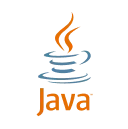Kubernetes lends a supporting hand to Docker with the facility of containers. Kubernetes is the ideal instrument for coordinating many clusters of nodes at the production level. For instance, 46% of firms polled ranked container-based apps as their top software development priority for the coming year, according to a Red Hat analysis published in 2021.

Thus, the developers can integrate their code into a shared repository as early as possible and deploying it quickly and efficiently. Red Hat, a provider of development tools, created the OpenShift Kubernetes platform. At its core, Openshift uses both Docker and Kubernetes container technologies.
OpenShift vs Docker: Templates
OpenShift is a cloud development Platform-as-a-Service (PaaS) developed by open-source provider Red Hat in 2011. It is written in Go, Ruby, and Angular JS and has support for Node.js, Python, Ruby, Perl, Go, and Java-based applications. Basically, it helps the user to develop, deploy, and manage container-based applications. OpenShift is a Kubernetes derivative, incorporating Kubernetes components and additional RedHat utilities. In simple words, RedHat & Google are known to offer a significant contribution to Kubernetes.

Developers who are interested in a portable container orchestration tool for building and testing apps can check out the OpenShift Developer Sandbox plan. However, OpenShift supports a variety of deployment environments including cloud, desktop, Android, and on-premise Windows/Linux. This containerization tool simplifies applications’ build and testing workflow so that developers won’t have to constantly switch back and forth between virtual and physical servers.
What Is Kubernetes?
The software provides a complete execution environment in which containers are deployed, executed, managed, and orchestrated. The integrated tools simplify modern development and deployment workflows. So it’s not surprising that the software runs on a wide variety of operating systems. Docker is relatively easy to install, and getting started is just as simple.
First of all, Docker provides faster integration and buildup, while OpenShift can sometimes lag with massive blockades for upstream. Continuing ahead with our discussion on OpenShift vs Kubernetes vs Docker, we shall also look at OpenShift vs docker. Since we have already taken note of the definition for both of these tools, let us dive directly into their differences. The focus of this discussion on OpenShift vs Kubernetes vs Docker shall now turn towards Kubernetes and OpenShift. Since we have already found the definition of Kubernetes and the main reasons for its popularity, let us find about OpenShift.
OpenShift vs. Docker: Overall
Conversely, OpenShift has an intuitive web console with a one-touch login page. The console gives you a simple, form-based interface that lets you easily modify, add, and delete resources. It is also easier to visualize your cluster roles, projects, and servers. Both Kubernetes and OpenShift run on an Apache 2.0 license and help in large-scale application management and deployment.
OpenShift is a container orchestration platform for managing clusters delivered as a Platform as a Service (PaaS). It employs Kubernetes container orchestration technology to enable you to manage Docker containers. The platform uses Kubernetes for orchestration and builds on Docker capabilities, offering abstracted cluster orchestration and management tools. OpenShift is used to build distributed, scaling application and development environments using the Platform-as-a-Service (PaaS) model.
Serverless vs Platform as a Service: Is Serverless the New PaaS?
In addition to the free open-source version, the company offers various paid products. Docker popularized container virtualization and largely displaced previously dominant virtual machines (VM). Application containers have revolutionized how applications are built, packaged, and run because containers are a standardized software entity.
Users may quickly expand their container deployment to new hosts by pooling together the resources of many Docker hosts. In small- to medium-sized deployments (and large-scale deployments when deployed with Kubernetes), Docker makes lightweight container images easy to build, deploy, and manage. Kubernetes is yet to include a native container image management system. But you can create a Docker image registry instead, such as Docker Hub.
Top 5 Best Practices for Software Development
I have gone through this (Understanding containers, images, and imagestreams) document but it does not explain much about imagestreams. Join us if you’re a developer, software engineer, web designer, front-end designer, UX designer, computer scientist, architect, tester, product manager, project manager or team lead. Even if we have the commonality of containers, getting them to run on Kubernetes https://www.globalcloudteam.com/ can be a challenge. It’s not as easy as a “build and refresh,” and the turnarounds are getting slower. Testing applications on Kubernetes—and testing in an environment as close as possible to the one used in production—can be a challenge. Getting an environment set up can also be difficult, and once that environment is available, we are exposed to new concepts and new paradigms.
- Containerization uses clusters of nodes (either real or virtual machines) that function like one robust server.
- Both are open-source technologies that ensure scalability if used together.
- OpenShift is a Kubernetes derivative, incorporating Kubernetes components and additional RedHat utilities.
- Kubernetes works on public, private, and hybrid clouds, as well as on-premises.
- It also leverages kernel isolation features to separate tenant processes within runtime containers.
An on-premises task can more easily be moved to a publicly accessible cloud, thanks to this method. ROSA (Red Hat OpenShift on AWS) and ARO (Red Hat OpenShift on EC2) are two lesser-known OpenShift product solutions. OpenShift clients can choose their choice cloud provider to install and run OpenShift. Both fully managed Red Hat and AWS/Microsoft services, ROSA and ARO, are available. More than 100,000 apps are accessible to the general public, and there are both private & public container registries available.
Kubernetes Vs. OpenShift: What Are The Differences?
Docker Swarm is a tool for clustering and scheduling Docker containers. Swarm allows developers and IT administrators to create Docker node clusters and manage them as individual virtual systems. Docker offers its own container orchestration openshift consulting solution, called Docker Swarm, which is built into the Docker Community Edition. You can also manage Docker containers using other orchestrators, however, note that Kubernetes has deprecated support for Docker since version 1.20.







